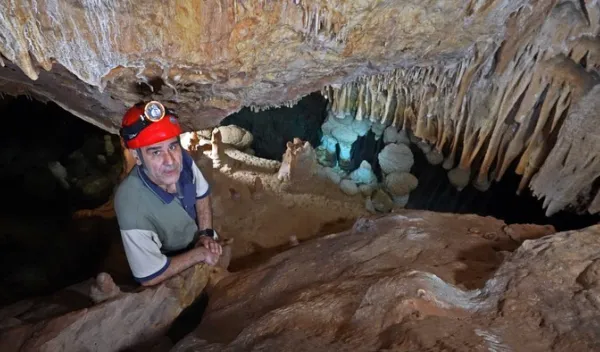
Hidden in caves: Mineral overgrowths reveal unprecedented modern sea level rise
The early 1900s saw rapid advances in the steel, electric and automobile industries. Those industrial changes also mark an inflection point in the planet’s climate. According to an international team of researchers led by University of South Florida geologists, sea level has risen 18 centimeters since the start of the 20th century.
The U.S. National Science Foundation-funded study, published in Science Advances, identifies preindustrial sea levels and examines the impact of modern greenhouse warming on sea level rise.
"This research highlights the relevance of studying past climate states, including global sea levels, to contextualize the magnitude and pace of current climate variability and the influence of natural and anthropogenic factors," said Soumaya Belmecheri, a program director in NSF's Division of Atmospheric and Geospace Sciences.
The team traveled to Mallorca, Spain, home to more than 1,000 cave systems, some with deposits that formed millions of years ago. The scientists focused on analyzing deposits from 4,000 years ago to the present day.
The team found evidence of a previously unknown 20-centimeter sea level rise that occurred nearly 3,200 years ago when ice caps melted naturally over the course of 400 years at a rate of 0.5 millimeters per year. Otherwise, despite major climate events like the Medieval Warm Period and the Little Ice Age, sea level remained stable until 1900.
"The results reported in our study are alarming," said lead author Bogdan Onac, a geologist at USF. "Sea level rise since the 1900s is unprecedented when compared to the natural change in ice volumes over the last 4,000 years. That implies that if global temperatures continue to rise, sea level could eventually reach higher levels than scientists previously estimated."
To create the timeline, the team gathered samples from eight caves along the coastline of the Mediterranean Sea. The deposits are rare, only forming near the coastline in cave passages that were repeatedly flooded by sea water, making them accurate markers of sea level changes over time. Each deposit holds valuable insights into both the past and future, helping researchers determine how quickly sea level will rise in the coming decades and centuries.
